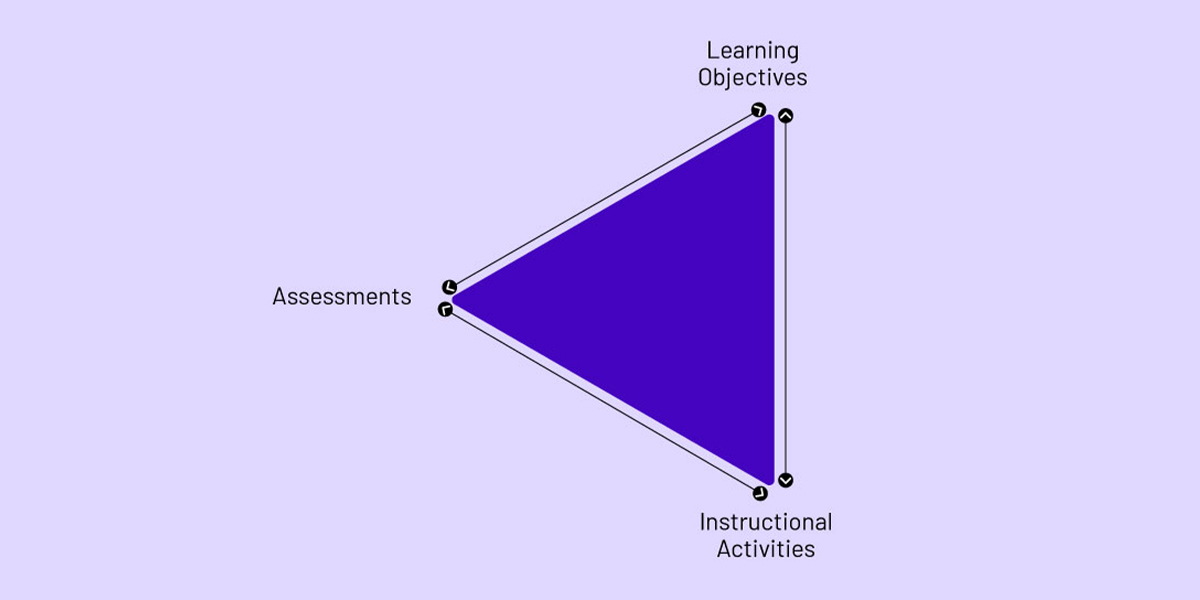
Are Your Digital Assessments Aligned with Curriculum Goals?
What’s the point of assessment if it doesn’t measure what students are supposed to learn?
Hard-hitting, but true.
A Carnegie Mellon University (CMU) report on Teaching Excellence and Educational Innovation emphasizes that the goal of assessments is to determine how further instructional activities drive students toward learning goals. Not just CMU, the emphasis on aligning digital assessments with the curriculum is intensifying across the US. The US Department of Education has, on several occasions, advised districts and educational institutions to transition to evidence-based practices for adopting curricula, textbooks, and K-12 digital learning platforms. For educational publishers, this means that both instructional design and digital assessments be backed by evidence to align K-12 education towards learning outcomes.


Source: CMU
The Role of Assessments in Today’s Digital Classrooms
Digital assessments are dynamic, interactive, and personalized. Unlike traditional approaches, the design, delivery, and evaluation processes are increasingly faster, bias-free, and targeted.
Expectations from edtechs are rising as fast as the technology enabling digital education is evolving. For instance, in the age of AI, immediate evaluation and feedback are an imperative in digital assessments. This feedback is not just a scorecard or grades. It is an insight into learners’ skill and knowledge acquisition with clear next steps to bridge learning gaps and support student growth.
These help educators ensure that learning gaps are identified and interventions are administered in a timely manner to keep learner progress at par with global and regional standards. These are driving the demand for digital assessments that map activities, questions, and their type with learning objectives. The visibility is further expected to facilitate instructional design and enhance the attainment of learning outcomes in K-12 education with the help of analytics.
Why Should Educational Publishers Prioritize Curriculum Alignment?
Aligning digital assessments with the curriculum and learning outcomes is a strategic imperative for K-12 assessment solutions providers for several reasons:
Ensures RFP Compliance
Given their evidence-based approach, districts increasingly mandate that all digital learning content, including instructional resources and assessments, align with specific frameworks, such as Common Core, NGSS, or individual state standards.
Enhances Reporting
K-12 digital assessments, mapped to learning outcomes, elevate education. They enable real-time tracking of student progress, empowering teachers and administrators with meaningful data.
Boosts Credibility and Adoption
K-12 digital assessment solutions that demonstrate coherence with individual and collective learning goals stand out in the crowded edtech market.
Assert Equity and Fairness
Assessments designed around what’s taught and what educators want students to learn are inherently more equitable. These, along with bias-free rubrics, give every student a fair chance to succeed.
Gaps Between Assessments and Curriculum Goals
While educational publishers are all in for evidence-based digital assessment design, some gaps remain between assessments and curriculum goals.
- One-size-fits-all assessments that overlook state-specific standards affect the chances of adoption.
- Lack of metadata tagging tied to learning objectives misses out on providing the evidence of well-designed digital assessments.
- Misalignment in difficulty level, skills measured, or content scope remains a prominent challenge for educators to navigate while assigning courses and assessments.
Best Practices for Publishers to Ensure Alignment
Educational publishers must adopt the industry best practices to ascertain the alignment of digital assessments with curriculum goals.


How MagicBox Can Help?
MagicBox’s powerful K-12 digital assessment solutions support publishers in effortlessly designing and distributing curriculum-aligned digital assessments.
MagicBox’s proprietary end-to-end Digital Assessment Platform is integrated with a powerful course authoring toolset. This enables K-12 publishers to effortlessly create and manage assessments. Automated compliance and standardization align digital assessments to US standards (national and regional) without manual intervention. The cloud-based API-powered integrations facilitate seamless distribution at scale.
A variety of assessment questions, including game-based, audio-video response, and more, offer educators the flexibility to tailor assessments to curricular goals. Assessments are embedded with AI-powered evaluations, even for descriptive answers. The assessment platform is integrated with learning analytics to offer immediate feedback and remediation insights. These enable hyper-personalized instruction delivery.
MagicBox’s MagicSync eliminates educational publishers’ integration woes. The platform simplifies integration with data management, learning, and collaboration tools. The single sign-on feature enables friction-free navigation for educators and learners, improving user experience.
Gain a Competitive Edge with MagicBox’s Digital Assessment Solutions
In a results-driven educational environment, curriculum alignment is no longer a nice-to-have; it’s a survival imperative. K-12 education publishers must assess whether their learning materials truly reflect what students are being taught.
The IES’s 2025 RFA for the Education Research and Development Center Program emphasizes the need to inform all educational practices-related decisions, prioritizing high-quality learning outcomes.
Curriculum-aligned assessments serve as the litmus test here. Misalignment not only undermines student outcomes but can also lead to missed adoption opportunities.
Want to see how aligned your assessments are? Let’s talk.
Source link




